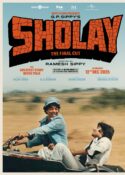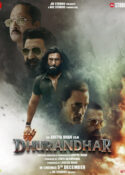 Bheed
Bheed
Directed by Anubhav Sinha
For my time and attention, Anubhav Sinha is the finest contemporary filmmaker of Hindi cinema. He makes the films that he wants to. Whether the audience participates in his compelling creative process(Mulk, Article 15) or not(Anek) Anubhav is fine with it.
Bheed comes too close to the actual trauma of the Lockdown for comfort. Assuredly this masterpiece on a real palpable immediate chunk of history makes us uncomfortable, as cinema was always supposed to.
But then we decided we wanted our cinema to be a song-and-dance nautanki. Anubhav Sinha, God bless his fearless soul, decided with Mulk to move away from the bheed, no pun intended. Look where he has reached now! Bheed is our own Schindler’s List. And I don’t mean just the black-and-white photography which could have been somewhat gimmicky in lesser hands.
Sinha and his incredibly articulate camera person (Soumik Mukherjee) use the B&W palate to tremendous efficacy to let us know how desperately bleak the scenario was at that time when all gates were shut on thousands of migrants as they tried to reach home.
Na ghar ka na ghat ka….Anubhav Sinha doesn’t drill into the despair of these foot soldiers as they trudged home for days without water and food (and yes, sanitary napkins) for tears. There is no room for sentimentality in this saga of survival by instinct.
Come to think of it, this is the best survival story ever. It has the inherent drama,the emotions, fireworks and mutinous undertones. Why then doesn’t it feel like drama?
Sinha keeps it restrained. The writing by Anubhav Sinha, Saumya Tiwari and Sonali Jain is neither sensationalized nor politicized. The events unfold as though foretold,but nonetheless there is sense of shock at the misery we see of the migrants. Sinha shoots the mobs with vigorous energy and yet there is an inherent sense of dread and despair in the individual faces whenever the camera zooms in on an occasional random face.
As I think back about the film, I see the narration as a collage of vibrant images of pain and tragedy. But I also see True Cinema in the profound authenticity that Sinha injects into every scene.
I could write a separate essay on the actors, big or small, minor or major they are all brilliant. Special mention must be made of Rajkummar Rao who plays the caste-conflicted guilt-ridden cop Surya Kumar Singh trying to figure out what to do with the hordes stuck at the border. There is a moment where he is pushed to the ground, his face frozen in what wlooks like wooden stake…it reifies hundreds of years of persecution of the lower castes.This is Rao’s best in year’s.
Bhumi Pednekar as Surya’s girlfriend Renu is feisty and yes, thirsty, as only she can be. Special mention must be made of Pankaj Kapoor as Balram Trivedi a watchman on a rampage , Ashutosh Rana as a police inspector whose bitterness when his parents cannot get beds in a hospital, spills over in his workplace.
Aditya Srivastava as Ram Singh,a cop who wants to milk the crisis for money(and why not!) and Dia Mirza as Geetanjali a privileged woman trying to reach her daughter in boardingschool before her husband, leave a mark .
My favourite sequence involves Geetanjali and her driver Kanhaiya (an absolutely self-effacingly brilliant Sushil Pandey) when they encounter a girl trying to cycle her sick father to safety. While Dia shrieks her empowered position, Kanhaiya reminds her that she needs him more than he needs her.
This is what makes Sinha so special. No filmmaker in India understands and projects the power dynamics of class and caste in India as effectively as Anubhav Sinha. For this alone, we are indebted to this master storyteller who tells it like it is. Take it or leave it.









